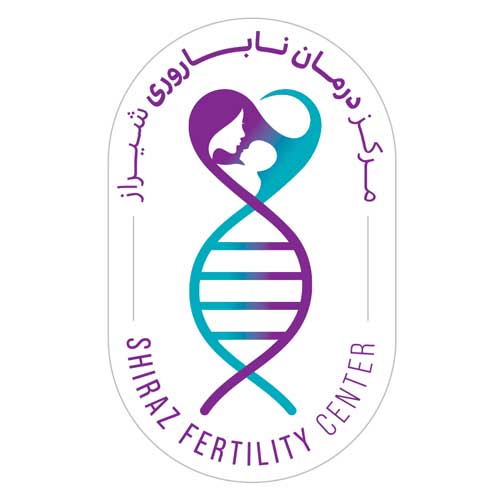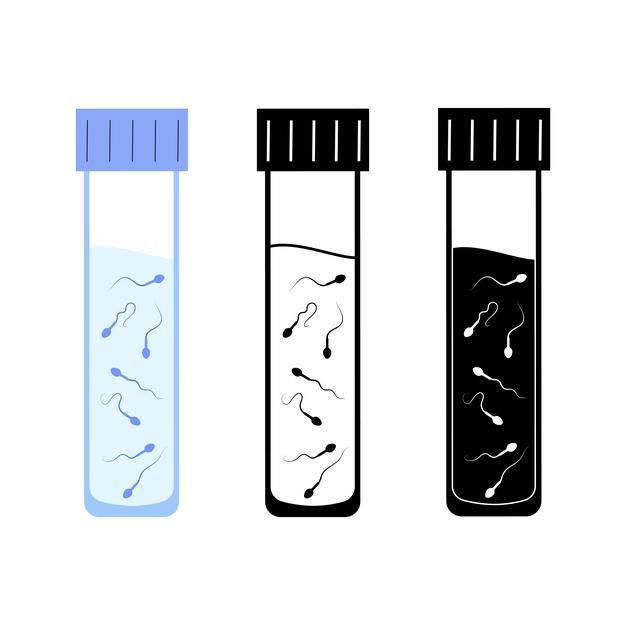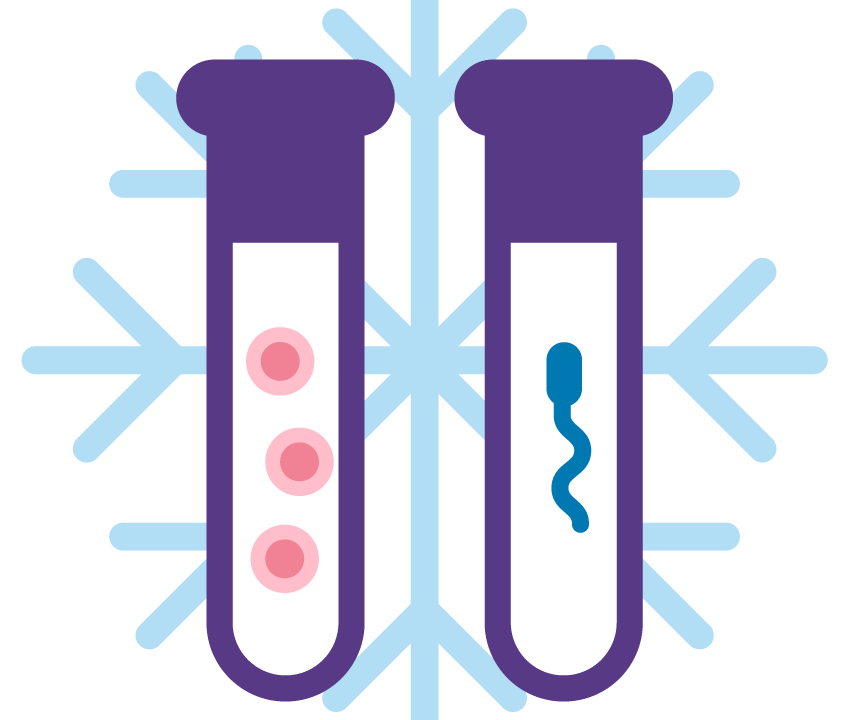
Causes of female infertility

Oocyte Pick up
Causes of male infertility
The results of a medical history, physical examination, and laboratory tests help a doctor classify the diagnosis of male infertility. Some causes of male infertility, such as cases of vas deferens obstruction and hypogonadotropic hypogonadism, can be accurately identified and treated effectively. However, in many cases, there may not be a specific etiology, and these cases will be classified as idiopathic.

Although the known causes of male infertility are diverse, they can be divided into four main groups:
1. Pre-Testicular Causes:These involve hypothalamic-pituitary disorders, accounting for approximately 1-2% of cases. They can be congenital, acquired, or the result of a systemic disease. Most of these are treatable with medication.
2. Testicular causes: include primary gonadal disorders, which account for 40-30% of causes and can be both congenital and acquired. Most of these disorders are irreversible. However, if sperm retrieval is possible, assisted reproductive technologies (ART) can be used to help these individuals.
3. Post-testicular causes: include cases of impaired sperm transport, which account for about 20-10% and can be treated with surgery and ART.
4. Idiopathic causes, which account for about 50-40% of cases.
Pre-testicular causes of male infertility
If hypothalamic and pituitary disorders are associated with a decrease in gonadotropin-releasing hormone (GnRH) or gonadotropins, they can lead to infertility.
Kallmann syndrome
This syndrome is characterized by an idiopathic deficiency of gonadotropins, resulting from the absence or inadequate secretion of gonadotropin-releasing hormone (GnRH). It’s often diagnosed in conjunction with extra-gonadal abnormalities such as anosmia, color blindness, midline facial defects, kidney anomalies, and others. The inheritance pattern can be autosomal dominant, passed from father to son, although X-linked and autosomal recessive patterns also exist. This gonadotropin deficiency leads to secondary testicular failure. Delayed puberty is the primary symptom and the most common reason for medical evaluation. The testicles appear underdeveloped and are typically less than 2 centimeters in diameter.
Due to a lack of gonadal stimulation, testicular atrophy occurs. Testicular biopsies reveal that germ cells have arrested in development and Leydig cells are hypoplastic. These men can become fertile with the administration of FSH, LH, and HCG hormones, which stimulate sperm production. After treatment, sperm motility is usually good, however, sperm counts below 10 million per milliliter are a common finding. Hypogonadotropic hypogonadism can also result from hypothalamic disease, treatments that suppress GnRH secretion, or pituitary stalk abnormalities that interfere with GnRH transport. Hypothalamic or pituitary tumors can disrupt the pituitary stalk or suppress pituitary gonadotropins.
In other syndromes such as Prader-Willi and Moon-Bardet-Biedl, patients have a deficiency in FSH and LH due to a lack of or inadequate secretion of GnRH. The recommended treatment for these individuals is similar to that of Kallmann syndrome. Congenital adrenal hyperplasia (CAH) due to a less severe enzyme deficiency can cause infertility in men. In Cushing’s syndrome, hormonal disturbances are characterized by low testosterone levels resulting from impaired function of Leydig cells in the testes. Oligozoospermia and a stress pattern similar to varicocele are also present in these patients.
Pituitary gland
Symptoms of pituitary dysfunction can manifest as infertility, sexual dysfunction, visual disturbances, and severe headaches. Typically, male secondary sex characteristics are present unless there is adrenal insufficiency. On physical examination, the testicles are soft and small. Testosterone levels and gonadotropin levels are low or normal.
The production of gonadotropins is inhibited by a negative feedback system involving estrogen and androgen on the hypothalamus and pituitary glands. In cases of androgen excess, which may arise from exogenous sources such as anabolic steroids used by athletes, metabolic disorders, or androgen-producing tumors, a state of hypogonadism occurs.Hyperprolactinemia is a complication observed in patients with pituitary adenomas, accompanied by a decrease in gonadotropins and testosterone. It can be associated with sexual dysfunction and infertility.
Generally, there are two groups of men with hyperprolactinemia:
The first group has a large, palpable pituitary tumor. These men usually seek medical attention due to sexual dysfunction.
The second group has an unknown cause for high prolactin levels. These men typically seek medical attention due to infertility.
While hyperthyroidism may be associated with infertility, individuals presenting with symptoms of thyroid dysfunction do not necessarily have primary infertility. Conversely, even with complete hormonal treatment in thyroid patients, the detrimental effects on fertility may persist. Therefore, awareness of the disease is crucial.
Klinefelter syndrome occurs when FSH levels are normal but individuals have a deficiency of LH. The deficiency of LH causes insufficient testosterone levels in the peripheral blood to produce secondary sex characteristics, but the presence of FSH and ABP maintains sufficient intratesticular testosterone levels for spermatogenesis. These patients may or may not have azoospermia, but even if sperm is produced, the sperm count and morphology are poor.
Testicular causes of male infertility
In general, the testicular causes of male infertility can be divided into the following groups:
-
- Chromosomal disorders
- Noonan syndrome (male Turner syndrome)
- Bilateral absence of the testes (vanishing testes syndrome)
- Sertoli-cell-only syndrome
- Gonadotoxins
- Orchitis
- Trauma
- Systemic diseases
- Cryptorchidism
- Varicocele
Klinefelter syndrome
This syndrome is a type of genetic disorder caused by the presence of an extra X chromosome in males, resulting in a common karyotype of 47,XXY. The prevalence of this condition is approximately 1 in 500 males. Characteristic physical features include small, firm testes; delayed puberty; azoospermia (absence of sperm); and gynecomastia (development of breast tissue in males). Due to the late onset of hypogonadism symptoms, diagnosis of this condition is often delayed. The reduction in testicular size is usually due to sclerosis and hyalinization of the seminiferous tubules. In these individuals, testicular size is less than 2 centimeters and volume is less than 12 milliliters. LH and FSH levels are significantly elevated.
Testosterone levels can be normal or may decrease with age. Approximately 10% of individuals with this syndrome have chromosomal mosaicism. These cases exhibit fewer symptoms of the syndrome and may be fertile due to the potential presence of a normal set of cells in the testes. Infertility in this syndrome is irreversible, and many of these patients require lifelong androgen replacement therapy to acquire male characteristics and normal sexual function.
XX Disorders
XX Disorders or Sex Reversal Syndrome have symptoms similar to Klinefelter syndrome, with the difference that these individuals are shorter than average and hypospadias is more common, while intellectual disability is less frequent. These patients have a 46,XX karyotype. It is likely that these individuals have a piece of the Y chromosome somewhere in their genome. XX males have a masculine appearance, small, firm testes.
XYY Syndrome
The prevalence of XYY syndrome is similar to that of Klinefelter syndrome, but the phenotype is different. Semen analysis in these individuals varies from azoospermia (no sperm) to normal samples. These patients are tall and have acne, and a percentage of them exhibit antisocial behaviors. Most of them have normal LH and testosterone levels, depending on the extent of involvement and damage to the germ cells. There is currently no specific treatment for infertility in these individuals.
Noonan Syndrome
In reality, this is the male equivalent of Turner syndrome and shares similar symptoms such as: short stature, webbed neck, ears lower than normal, and eye and heart disorders. Many of these individuals have cryptorchidism (undescended testicles) and reduced spermatogenesis, leading to infertility. Those with impaired testicular function have elevated LH and FSH levels. Chromosomal analysis often reveals a sex chromosome abnormality such as XO/XY mosaicism. There is currently no cure for infertility in these individuals.
Myotonic dystrophy
This disease is autosomal dominant and causes infertility due to testicular atrophy.
Bilateral absence of testes
In these men, the testicles cannot be felt. The presence of a male phenotype before puberty suggests that androgen-producing testicular tissue existed during fetal life. The testicles may have been destroyed in utero due to factors such as infection, vascular injury, or testicular torsion. No abnormalities in the sex-determining region Y gene (SRY) have been found in these patients. Plasma testosterone levels are low, and gonadotropin levels are high. Although secondary male sex characteristics may be induced by testosterone administration, their infertility is irreversible.
Germ cell aplasia
Sertoli-cell-only syndrome or aplasia of the germinal cells has various causes, including congenital absence of germ cells, genetic defects, or androgen resistance. Clinical findings include azoospermia despite the presence of secondary male characteristics, normal testicular consistency but small size, and absence of gynecomastia. Testosterone and LH levels are normal, but FSH levels are usually elevated. In 40-60% of cases, sperm can be retrieved from testicular tissue using assisted reproductive techniques (micro-TESE).
Gonadotoxins
Gonadotoxins, such as drugs and radiation, can affect the germinal epithelium in the testicles. This is because this epithelium divides rapidly and is susceptible to cell division disruptions. Chemotherapy for cancer has dose-dependent effects on this epithelium. It appears that the germinal epithelium in the prepubertal period is more resistant to these drugs compared to the postpubertal period. In some of these patients, sperm cryopreservation can be performed before starting chemotherapy to preserve fertility.
Drugs like cyproterone, ketoconazole, spironolactone, flutamide, and alcohol consumption can interfere with testosterone synthesis.
Cimetidine is a testosterone antagonist that blocks the peripheral effects of testosterone, leading to gynecomastia and decreased sperm count in men. Nitrofurantoin, used to treat and prevent urinary tract infections, can disrupt carbohydrate metabolism and, at high doses, can interrupt spermatogenesis at the primary spermatocyte level. Chlorinated insecticides can also cause serious disruptions in spermatogenesis. Radioactive radiation can cause azoospermia. The prepubertal testis is more sensitive to radiation, and in the adult testis, the spermatogonia B cell line is more sensitive than other germ cell lines. X-rays can also negatively affect spermatogenesis, particularly affecting the more mature germ cell lines.
Epididymitis and orchitis
Approximately 15-25% of adults who contract mumps can develop orchitis (inflammation of the testicles). This condition can lead to testicular atrophy within 6-12 months or a year. In less than a third of men with bilateral orchitis, semen parameters remain normal.
The most common cause of inflammation within the scrotum is epididymitis. In the past, epididymitis was thought to be caused by urine reflux, but the primary source of infection is the retrograde movement of pathogens, with bacteria being the most common cause.
When inflammation spreads from the epididymis to the adjacent testicle, orchitis occurs, which is characterized by pain and swelling. Epididymitis is more common than orchitis. Orchitis usually does not occur alone and is often associated with mumps infection in boys. If accompanied by mumps, orchitis typically occurs 4 to 7 days after parotitis (inflammation and infection of the parotid glands). Testicular involvement in mumps becomes significant only after puberty. Approximately one-third of post-pubertal mumps patients develop mumps orchitis, and it is usually bilateral.
Trauma
Injuries resulting from medical errors during inguinal and groin surgeries may lead to impaired blood supply or damage to the vas deferens.
Systemic diseases
Systemic diseases, such as kidney failure leading to uremia in men, are associated with decreased libido, changes in spermatogenesis, and gynecomastia. Antihypertensive drugs and uremic nephropathy play a significant role in sexual dysfunction and hypogonadism. In uremic patients, increased prolactin, estradiol, and parathyroid hormone levels, along with decreased plasma testosterone and zinc, contribute to sexual dysfunction, oligospermia, and/or azoospermia. After successful kidney transplantation, uremic hypogonadism improves.
A significant percentage of patients with liver cirrhosis experience testicular atrophy, sexual dysfunction, and gynecomastia. Testosterone levels are low in these individuals. As a result of decreased secretion of hepatic androgens and increased conversion to estrogen, estradiol levels rise. Gonadotropin levels increase slightly.
Many men with sickle cell anemia exhibit symptoms of hypogonadism. Although LH and FSH levels may vary, testosterone levels are low in these individuals. Hypogonadism associated with sickle cell disease is likely secondary to a combination of testicular and hypothalamic causes. Zinc deficiency, which is also observed in sickle cell anemia, may contribute to impaired spermatogenesis in these patients.
Cryptorchidism
Cryptorchidism or undescended testicles is a common developmental disorder, occurring in approximately 0.8% of male births. It happens when one or both testicles fail to descend into the scrotum before birth. Normally, a male fetus’s testicles descend into the scrotum by the end of the ninth month of pregnancy. Premature babies are more likely to have undescended testicles.
Some infants may have a condition called a retractile testicle which is different from an undescended testicle. In this condition, the testicle cannot be felt in the scrotum, but the testicles are normal and are simply pulled up out of the scrotum by a muscle reflex. These testicles usually descend by puberty and do not require surgery.
Testicles that do not descend into the scrotum are considered abnormal. Undescended testicles have a higher risk of developing cancer, even if surgically placed into the scrotum. The risk of cancer in the other testicle is also increased in these individuals. Lowering the testicle into the scrotum through surgery helps improve sperm production and increases the chances of fertility. However, even with surgery, no testicle may be found. This is due to developmental abnormalities of the testicle during fetal development.
Undescended testicles become abnormal in morphology after the age of two. Individuals with unilateral undescended testicles experience a decrease in fertility. The best time for surgery is between 6 and 12 months of age.
Varicocele
Varicocele is the most common finding in infertile men and is seen in 12% of men with normal semen analysis and 26% of men with abnormal semen analysis. Varicocele is characterized by the enlargement and dilation of the veins within the scrotum. It is classified into primary and secondary types. In the primary type, no specific causative factor has been identified, although theories include a defect in the valves of the testicular veins, the long length of these veins, and the possible compressive effect of other vessels and abdominal organs. However, no definitive cause has been established. This type accounts for 90% of cases and occurs more commonly on the left side.
Secondary varicoceles are caused by blockages in the veins within the abdomen and account for a small percentage of all varicoceles. The most common cause is abdominal masses, especially malignant tumors. Patients may present with complaints of enlarged testicles, testicular asymmetry, testicular pain, or infertility. However, the most common form is asymptomatic and is incidentally discovered during a physical examination.
On physical examination, enlargement and swelling of the testicular veins, especially on the left side, are evident. The symptoms are often exacerbated in a standing position due to increased abdominal pressure and resolve in a lying position. If the venous swelling does not disappear when lying down, secondary varicocele should be suspected.
Varicocele Grading
Grade 3: Veins are visible when standing.
Grade 2: Veins are palpable when standing.
Grade 1: Veins are palpable during Valsalva maneuver.
Subclinical varicocele, which is not palpable on physical examination but can be diagnosed by ultrasound. The exact mechanism by which varicocele affects fertility is unknown, but the following theories have been proposed:
– Increased testicular temperature due to venous stasis.
– Retrograde flow of toxic metabolites from the adrenal gland and kidney.
– Venous stasis with hypoxia in the germinal cell epithelium.
– Alteration in the hypothalamic-pituitary-gonadal axis.
The only treatment for varicocele is surgery. The decision to undergo surgery depends on various factors, including the severity of the varicocele, the patient’s age, and fertility status (marital status and whether or not they have children). If the varicocele is associated with abnormal semen analysis results, surgery is still necessary. At least two or three semen analyses should be performed to make a decision. As mentioned, there is no medical treatment for varicocele, and surgery is the only treatment option.
Conditions that warrant avoiding varicocele surgery include: abnormal karyotype, elevated FSH levels, history of cryptorchidism, and age over 40 years. In cases of subclinical varicocele, the effectiveness of surgery in treating infertility has not been proven.
Post-testicular causes of male infertility
Even if sperm is produced normally, blockages or malfunctions in the ducts that transport sperm can lead to infertility. The patency of these pathways plays a crucial role in sperm maturation, which can impact the outcome of treatment, including assisted reproductive technologies. In cases of obstructive azoospermia, in addition to blockages, there may be motility and even morphological abnormalities in sperm due to epididymal dysfunction. The most common sites of obstruction in the sperm transport pathway are the vas deferens, epididymis, and ejaculatory duct. Various causes can lead to these blockages, including congenital defects, infections, vasectomy, and complications from these procedures.
Congenital absence of the vas deferens, unilateral or bilateral
Congenital bilateral absence of the vas deferens (CBAVD) is linked to mutations in the cystic fibrosis transmembrane conductance regulator (CFTR) gene. In addition to the absence of the vas deferens, other defects such as absence of the distal epididymis, absence or structural and functional abnormalities of the seminal vesicles may also be observed. Most of these patients do not exhibit any respiratory or pancreatic diseases, and their first visit is due to infertility. CBAVD is found in approximately 2% of infertile men and accounts for at least 6% of cases of obstructive azoospermia. Today, successful treatment is achieved with sperm aspiration combined with intracytoplasmic sperm injection (ICSI).
Vasectomy
The low success rate in vasectomy patients who ultimately require intracytoplasmic sperm injection (ICSI) indicates the detrimental effects of vasectomy on spermatogenesis. Similar to other blockages, sperm are not immune to functional damage. In approximately less than 10% of vasectomy reversal cases, we observe secondary azoospermia. One suggested approach is to freeze sperm immediately after they are found.
Retrograde ejaculation
Ejaculation is a reflex action. When the sympathetic nerves are activated, the seminal vesicles and vas deferens contract, expelling their fluid contents into the ejaculatory ducts and then into the urethra. The prostate also adds its acidic fluid to this mixture. Simultaneously, the neck of the bladder closes tightly to prevent retrograde flow. If there is any obstruction in this pathway, the semen can enter the bladder through the prostatic urethra, causing retrograde ejaculation. Metastatic testicular cancer commonly involves the retroperitoneal lymph nodes.
If surgery is required to remove lymph nodes in and around the aortic bifurcation, the sympathetic nerves passing through this area may be damaged or severed, leading to retrograde ejaculation. In most cases, depending on the extent of the damage and the patient’s medical history, various treatment methods are used. These include external electrical stimulation and penile vibration therapy. If these methods are unsuccessful, surgical sperm retrieval is considered as a last resort.
Primary ciliary dyskinesia
Kartagener syndrome and primary ciliary dyskinesia (PCD) encompass a diverse group of syndromes characterized by abnormal structure and function of cilia. These conditions typically manifest as recurrent sinus and lung infections, bronchiectasis, situs inversus (reversed organ positioning), and male infertility. A defect in the dynein molecule, a component of the sperm tail, is a major factor contributing to sperm immobility in these patients. Intracytoplasmic sperm injection (ICSI) is considered an effective treatment option in these cases. Notably, when the father has severe morphological defects in the sperm tail, healthy baby girls can be born.
Other disorders
Young’s syndrome is another genetic disorder where thick secretions in the vas deferens and epididymis cause obstructive azoospermia. In individuals with spinal cord injuries, especially those with complete spinal cord injuries, in addition to the absence of ejaculation, there are also abnormalities in sperm count, motility, and morphology. In long-standing diabetes mellitus, ejaculatory disorders may occur secondary to the disease and due to involvement of the sympathetic nerves, leading to impaired ejaculation.
Source: Clinical Approaches to Infertility in Reproductive Biology
Also read:




